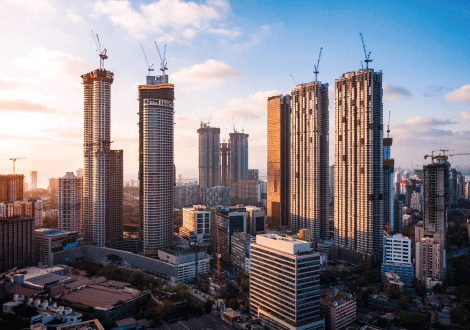INFRASTRUCTURE
HC Robotics 3D Mobile Mapping involves the use of mobile scanning systems mounted on vehicles to capture high-resolution geospatial data along transportation corridors. LiDAR, on the other hand, utilizes laser pulses to measure distances and create detailed three-dimensional models of the environment. By combining these technologies, HC Robotics 3D Mobile Mapping and LiDAR services enable comprehensive data acquisition, visualization, and analysis of expressways and highways with unparalleled accuracy and efficiency.
The modernization and expansion of expressways and highways play a crucial role in facilitating economic growth, enhancing connectivity, and improving transportation efficiency. However, the planning, design, and maintenance of these critical infrastructure projects require precise spatial data and comprehensive surveys. Enter 3D Mobile Mapping and Light Detection and Ranging (LiDAR) services from HC Robotics, cutting-edge technologies revolutionizing the way expressways and highways are surveyed, analyzed, and developed. In this article, we explore the utility of 3D Mobile Mapping and LiDAR services in infrastructure development, surveys of expressways, and highways, uncovering their transformative impact on the transportation sector.

Applications in Infrastructure Development:
- Preliminary Surveys and Planning: 3D Mobile Mapping and LiDAR services provide essential data for preliminary surveys, route selection, and feasibility studies of expressway and highway projects. By capturing detailed terrain features, existing infrastructure, and environmental conditions, these technologies support informed decision-making and optimal route alignment.
- Design and Engineering: The high-resolution data obtained from 3D Mobile Mapping and LiDAR surveys facilitate detailed design and engineering of expressways and highways. Engineers can use the precise elevation models, cross-sectional profiles, and geometric data to design road alignments, intersections, and drainage systems with greater accuracy and efficiency.
- Right-of-Way Acquisition and Land Management: Accurate spatial data from 3D Mobile Mapping and LiDAR surveys aid in right-of-way acquisition, land valuation, and land management for expressway and highway projects. By precisely delineating property boundaries, utilities, and environmental features, these technologies support transparent negotiations and minimize conflicts during land acquisition processes.
- Construction Monitoring and Quality Assurance: During construction, 3D Mobile Mapping and LiDAR services enable real-time monitoring of earthwork activities, pavement quality, and structural integrity along expressways and highways. By comparing as-built conditions with design specifications, engineers can identify discrepancies, ensure compliance with standards, and address issues promptly.
Applications in Surveys of Expressways and Highways:
- Asset Inventory and Management: 3D Mobile Mapping and LiDAR services facilitate comprehensive asset inventory and management for expressways and highways. By capturing detailed information on signage, pavement markings, guardrails, and roadside infrastructure, these technologies support maintenance planning, asset condition assessment, and lifecycle management.
- Pavement Condition Assessment: LiDAR-based pavement scanning systems enable rapid and accurate assessment of pavement condition, distresses, and roughness along expressways and highways. This information helps transportation agencies prioritize maintenance activities, optimize rehabilitation strategies, and extend the service life of pavement assets.
- Safety Analysis and Risk Assessment: 3D Mobile Mapping and LiDAR services contribute to safety analysis and risk assessment by identifying potential hazards, geometric deficiencies, and collision hotspots along expressways and highways. By analyzing sight distances, horizontal and vertical alignments, and roadside features, these technologies support proactive measures to enhance road safety and mitigate crash risks.
While HC Robotics 3D Mobile Mapping and LiDAR services offer significant benefits for infrastructure development and surveys of expressways and highways, challenges such as data processing complexity, cost considerations, and regulatory requirements remain. Addressing these challenges requires ongoing research, innovation, and collaboration among stakeholders. Future directions for these technologies include the integration of advanced sensors, the development of automated data processing workflows, and the adoption of cloud-based platforms for data sharing and collaboration.
In conclusion, 3D Mobile Mapping and LiDAR services are revolutionizing infrastructure development and surveys of expressways and highways, offering unparalleled capabilities for data acquisition, analysis, and visualization. By harnessing the power of these technologies, transportation agencies, engineers, and planners can make informed decisions, improve project outcomes, and enhance the safety, efficiency, and sustainability of our transportation networks. As technology continues to evolve, the potential of 3D Mobile Mapping and LiDAR services to transform the transportation sector is boundless, paving the way for a smarter, more connected future.
